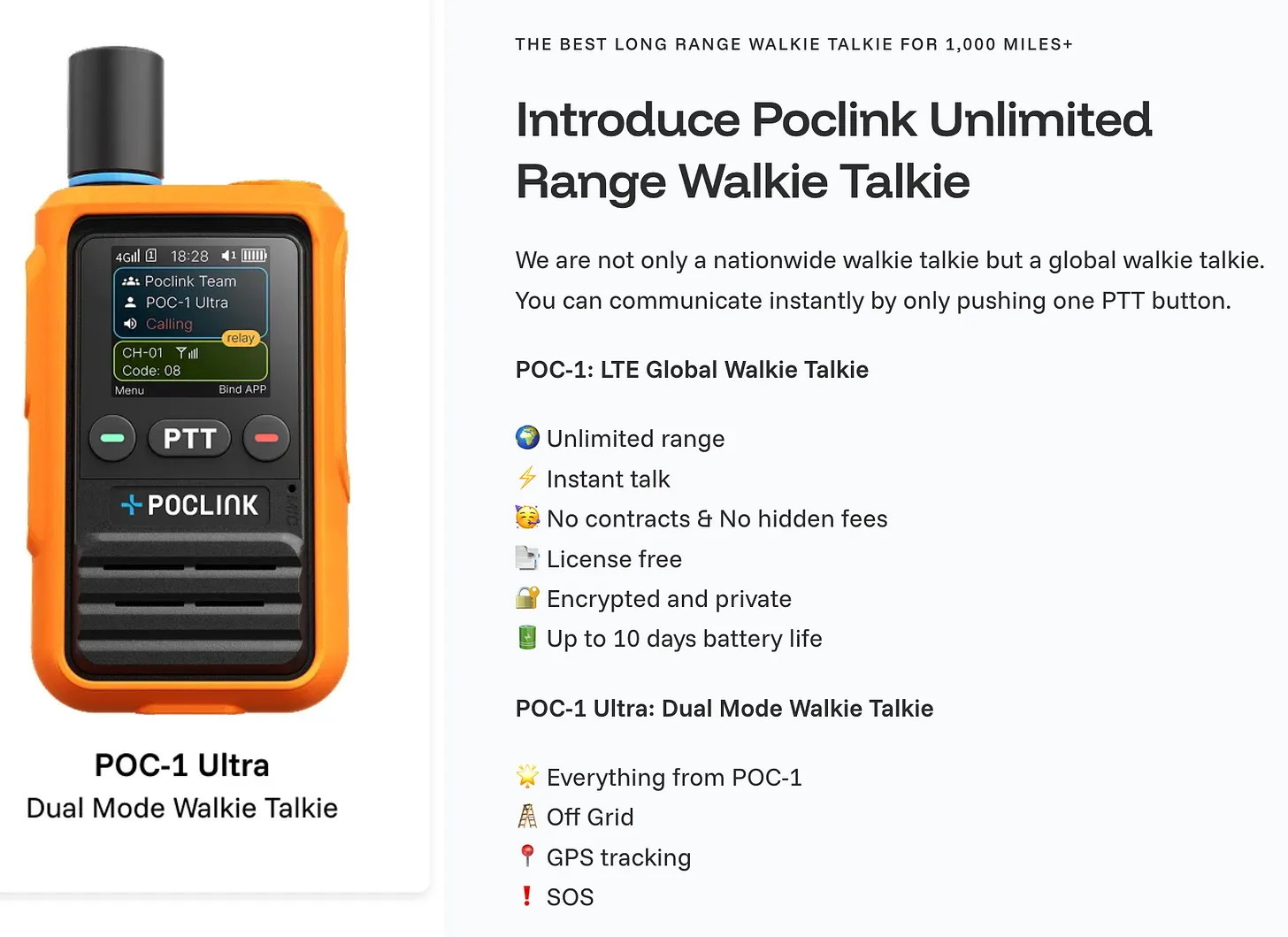🧠 BLUF
Cybersecurity firm Proofpoint has confirmed a coordinated wave of cyber-enabled cargo theft hitting U.S. trucking and logistics companies, using Remote Monitoring and Management (RMM) tools to hijack freight in real time.
Threat clusters active since at least June 2025 are working with organized crime to steal physical loads—especially food and beverage cargo, a direct hit on national resilience.
This is the new face of asymmetric warfare: take over trucks, not planes; crash supply chains, not skyscrapers.
You cannot stop this at the grocery aisle. You beat it with local redundancy, hardened fleets, and community-level resilience before the shock hits.
Keep reading below …
DISCLOSURE: This post contains affiliate links. If you make a purchase through them, we may earn a small commission at no extra cost to you. This helps keep our work independent. Thank you for your support.
📡 CONTEXT
Proofpoint’s latest threat insight confirms what we’ve been warning for months: cybercriminals—and the networks behind them—have shifted from stealing data to stealing real-world freight. Since at least June 2025, attackers have been infiltrating trucking carriers, freight brokers, and logistics providers with weaponized RMM tools (ScreenConnect, SimpleHelp, PDQ Connect, Fleetdeck, LogMeIn Resolve, N-able), then using that access to bid on real loads and reroute shipments for theft. Cargo theft already drains tens of billions annually; now, with cyber in the mix, the thieves are going after the digital nervous system of U.S. logistics.
⚠️ THREAT PROFILE
What this attack wave actually looks like on the ground:
Infiltration Method
Attackers impersonate brokers or use hijacked accounts to send phishing emails and malicious URLs to carriers and brokers. Those links drop “legit” RMM installers—signed, trusted software—so security tools don’t scream. Once installed, the threat actor has live remote access into dispatch and load systems.
Hybrid Cyber + Physical Theft
This isn’t just stealing logins. Proofpoint assesses with high confidence that these clusters are working with organized crime groups: they use digital access to bid on high-value loads, alter bookings, kill dispatcher alerts, and reroute trucks so real crews show up to move cargo straight into the black market.
Target Profile
Mid-size trucking carriers without mature cybersecurity.
Warehouse and cross-dock hubs running outdated firewalls and exposed IoT gear.
Freight brokers and subcontractors using email + load boards as their primary workflow.
What They’re Stealing
Food, beverages, consumer goods, electronics—high-turn, easy-to-resell cargo—exactly the commodities that keep shelves stocked and people calm.
Strategic End State
Make money and prove a point: that America’s lifeline can be choked digitally. You don’t have to crater a building if you can quietly starve a city block.
STAND WITH THE MISSION...
If you rely on our SITREPs and ThreatWire briefings to stay ahead of what’s coming, upgrade to Guardian today. Your support keeps SDN independent and our intelligence flowing – no filters, no sponsors, no censorship.
🧍♂️ FOR EVERYDAY AMERICANS — PRACTICAL STEPS
You can’t patch a trucking TMS from your kitchen table—but you can harden your own life against logistics shock.
Plan for “no trucks = no stock”
Trucks move ~70% of U.S. freight and carry the first/last miles for most food and essentials. Most stores start to feel shortages in 2–3 days if resupply stops.
Build a 2–4 week buffer
Staples: rice, beans, oats, pasta, oil, salt, canned proteins, shelf-stable milk.
Criticals: prescriptions, hygiene items, baby supplies, pet food.
Think “local, not Amazon”
Map nearby sources: farm stands, co-ops, church pantries, local butchers. If long-haul breaks, local lanes and direct-from-source become your emergency supply chain.
Form a resilience circle
Trade skills: one neighbor has tools, another has garden space, another has comms. Practice “what if trucks stop for a week?” as a tabletop, not a panic.
Watch your info diet
During disruptions, ignore rumor screenshots and anonymous “whistleblower” posts. Follow state DOT, major carriers, and local emergency management for actual status updates.
Get the POC-1 Ultras for only $399 for two radios and no annual fee for LTE network service for the life of the radios. This price is only for the first 1,000 units sold. After that they’ll be $1,140 a pair, and $29 to $65 a year for LTE service.
Get them HERE.
🔊 FEATURED OFFER / GEAR BLOCK
Preparedness Essentials — Partners We Trust
Why here: when logistics go dark, comms, power, and medical are your lifelines while shelves catch up.
👉 Consider vetted options for training tools (Mantis), legal defense (CCWSafe), carry/EDC (Vertx), and protective equipment
👮♂️ FOR BUSINESSES — PUBLIC-SAFE ACTIONS (FLEETS, BROKERS, WAREHOUSES)
If you move freight, you are now a frontline target. You don’t have to be perfect—you have to be harder than the next guy.
Tighten Email & Load-Board Hygiene
Train staff that setup packets, load offers, and “urgent updates” can be attack vectors. No one installs RMM or clicks an MSI/exe from an email without verification and a second set of eyes.
Lock Down RMM
Inventory every remote tool you actually use. Remove everything else.
Restrict RMM access to whitelisted IPs, use MFA, and log all sessions. If you don’t have a documented use case for it, it doesn’t belong on a dispatcher’s machine.
Segment & Back Up
Keep dispatch, finance, and warehouse systems segmented. Regular, offline-tested backups mean an intrusion is painful—not fatal.
Know Your “Normal”
Baseline: usual lanes, usual shippers, usual brokers, usual rates. Red flags: unusual high-value loads, new counterparties with rushed timelines, changes to pickup/delivery that bypass normal checkpoints.
Partner with Carriers on Security
Include basic cyber standards in contracts: patching, MFA, incident notification. If you’re the broker and your carrier gets popped, your freight is just as gone.
🛰️ WHAT TO WATCH — OPERATIONAL INDICATORS
Spike in “setup packet” or freight-offer emails asking staff to install RMM, open MSI installers, or log into new portals.
Unusual routing changes, canceled bookings, or dispatcher alerts suddenly going quiet mid-day.
Clusters of cargo thefts involving full trailer disappearance or “ghost carriers” who never deliver.
FBI/DHS, NICB, or industry alerts explicitly tying RMM abuse to freight theft campaigns.
👮♂️ FOR LAW ENFORCEMENT — PUBLIC-SAFE REMINDERS
You’re not just dealing with stolen pallets; you’re dealing with critical infrastructure attacks by proxy.
Treat This as CI, Not “Just Cargo Theft”
Food, fuel, and medical freight are Tier-1 lifeline goods. A rash of targeted thefts or hijacked routes is not ordinary crime; it’s a potential national-security precursor.
Work Fusion, Not Just Patrol
Loop in fusion centers and federal partners when you see:
regional spikes in full-load theft;
repeated victimization of the same carrier corridors;
digital compromise indicators (odd routing, fake carriers, spoofed brokers).
Encourage Early Reporting
Most small fleets fear insurance hikes and reputational damage. Emphasize intel value and potential pattern disruption to encourage timely reporting of suspicious digital activity, not just stolen trailers.
Train on RMM & Load-Board TTPs
Make sure investigators know the basics: load boards, broker/carrier relationships, common RMM names. If a detective doesn’t recognize “ScreenConnect” or “SimpleHelp,” they’re already behind.
INFORMATION IS SURVIVAL...
Free subscribers get the headlines. Guardians get the intel – private Signal channels, emergency alerts, and direct access to our team. When things go bad, which one do you want your family and friends to be?
🧠 SDN ANALYSIS — JON WHEATON
This is the evolution we’ve been warning about: cyber-enabled soft sabotage. You don’t need hijacked jets when you can hijack the trucks that feed a region. You don’t need to bomb a refinery if you can quietly make the fuel stop arriving. Proofpoint just put hard intel behind the theory—remote access, real cargo, and organized crime at scale.
If 9/11 2.0 comes, I believe supply chains are the second wave — maybe even the first. The answer isn’t panic; it’s preparedness: local redundancy, hardened logistics, and communities that can ride out weeks of disruption without turning on each other. Stock what you can, build the networks you need, and stop assuming “just-in-time” will always arrive just in time.
GodSpeed
Jon Wheaton














